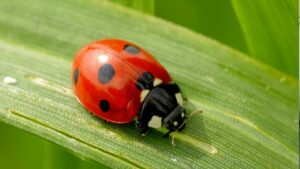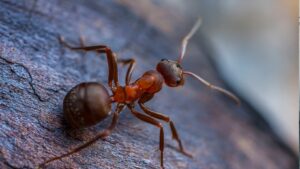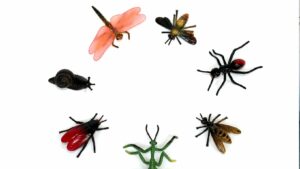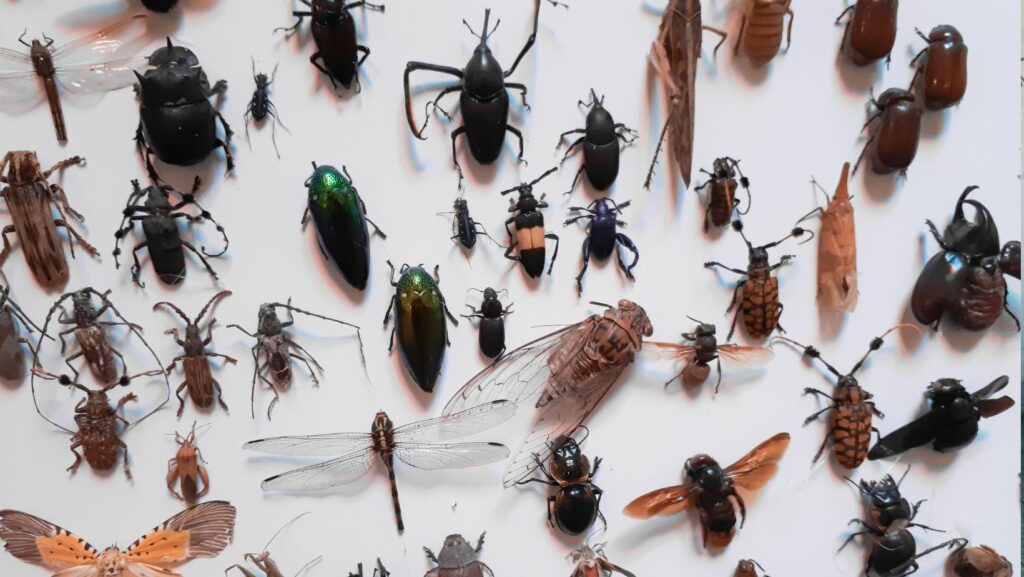Beware, adventurers and nature enthusiasts! Our world is home to a myriad of creatures, some awe-inspiring, others fear-inducing. Among these, a select group of insects have earned a notorious reputation for their deadly capabilities. In this article, I’ll introduce you to the top 10 most dangerous insects that share our planet.
From venomous stingers to disease carriers, these tiny terrors pack a potent punch. Their size often belies the threat they pose, making them an unseen danger in our daily lives. Get ready to delve into the world of these dangerous insects, and learn how to identify and avoid them.
So, brace yourselves as we embark on this journey, exploring the fascinating, yet chilling world of the deadliest insects. It’s a journey that’s sure to make your skin crawl, but also one that will leave you more informed and prepared.
Deadly Top 10 Dangerous Insects
 Insects, in spite of their small size, often pack a potent punch. Their danger lies in their venom, disease transmissions, and even physical harm. Insects can transform into microscopic executioners with the ability to inflict deadly harm, despite their diminutive size. A considerable number of these species possess potent venom, capable of causing severe reactions, if not treated promptly. Take, for instance, the Maricopa Harvester Ant, which has the most venomous sting registered amongst insects. A single bite, leaving a venom ten to twenty times more potent than a honeybee, may result in severe pain and possible allergic reactions. Even more remarkably, certain mosquitoes, including the female Anopheles mosquito, exemplify disease vectors, transmitting parasites causing malaria that led to over 400,000 deaths globally in 2019.
Insects, in spite of their small size, often pack a potent punch. Their danger lies in their venom, disease transmissions, and even physical harm. Insects can transform into microscopic executioners with the ability to inflict deadly harm, despite their diminutive size. A considerable number of these species possess potent venom, capable of causing severe reactions, if not treated promptly. Take, for instance, the Maricopa Harvester Ant, which has the most venomous sting registered amongst insects. A single bite, leaving a venom ten to twenty times more potent than a honeybee, may result in severe pain and possible allergic reactions. Even more remarkably, certain mosquitoes, including the female Anopheles mosquito, exemplify disease vectors, transmitting parasites causing malaria that led to over 400,000 deaths globally in 2019.
The Global Impact of Deadly Insects
 The tentacles of deadly insects’ impact stretch beyond immediate harm to individuals. They also inflict significant economic losses and pose grave health risks. Deadly insects damage economies, wearing multiple hats of pests and destructors. For instance, termites cause an estimated $5 billion in property damages annually in the United States, the National Pest Management Association estimates. Avowed crop raiders, insects like locusts, armyworms, and bollworms, strip agricultural fields, causing massive harvest losses.
The tentacles of deadly insects’ impact stretch beyond immediate harm to individuals. They also inflict significant economic losses and pose grave health risks. Deadly insects damage economies, wearing multiple hats of pests and destructors. For instance, termites cause an estimated $5 billion in property damages annually in the United States, the National Pest Management Association estimates. Avowed crop raiders, insects like locusts, armyworms, and bollworms, strip agricultural fields, causing massive harvest losses.
The Food and Agricultural Organization reports, a single swarm of desert locusts, spanning a square kilometer, can consume as much food in one day as 35,000 people. Besides direct damages, there’s the effect of curbing tourism in regions infested with notorious insects. Australia, for instance, experiences a dip in visitor numbers during box jellyfish season.
Health Risks
Insects are vectors for multiple, often deadly diseases, worsening global health scenarios. WHO reports, the diminutive mosquito is the deadliest animal on Planet Earth, causing over one million fatalities annually, primarily due to malaria. Furthermore, mosquitoes transmit debilitating diseases like Zika, Dengue, Yellow Fever, and West Nile virus. Similarly, ticks carry Lyme disease, causing around 427,430 new cases in the U.S. each year, according to the CDC. Additionally, insects like triatomine bugs—also known as ‘kissing bugs’—sleeping sickness-triggering tsetse flies, and filariasis-causing fleas command a severe health toll worldwide.
Top 10 Most Dangerous Insects
 Beyond their mere nuisance value, certain insects pose a very real threat to humans. In this section, we’ll delve into the top 10 most dangerous insects, elucidating their particular risks.
Beyond their mere nuisance value, certain insects pose a very real threat to humans. In this section, we’ll delve into the top 10 most dangerous insects, elucidating their particular risks.
Of all insects, mosquitoes represent the deadliest to human life. These seemingly simple pests transmit deadly diseases like malaria and dengue fever. According to the World Health Organization (WHO), mosquitoes infect nearly 700 million people annually, resulting in over one million deaths.
Tsetse Flies
On the African continent, Tsetse flies wreak havoc, transmitting a disease known as African Trypanosomiasis or “sleeping sickness.” The WHO states that early symptom treatment is vital. Left unchecked, the disease attacks the central nervous system, often leading to death.
Fire Ants
Fire Ants, native to South America, radiate aggressive behavior, delivering painful bites. However, an allergic reaction to their venom, labeled anaphylaxis, causes severe health issues, including breathlessness and heart issues, which, in numerous cases, proves fatal.



